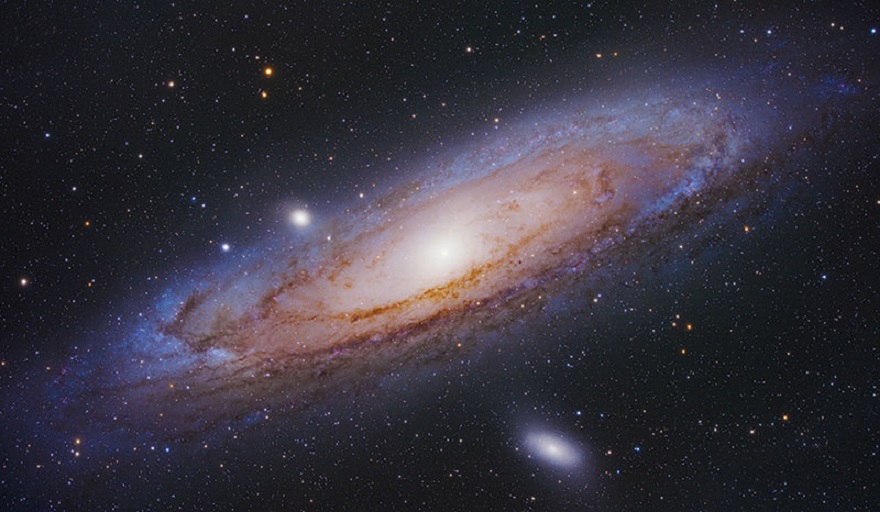Scientists used the methods of “space archaeology” in order to find out the history of the Andromeda Galaxy next to us. They realized that this star system had experienced an explosion of star formation caused by a merger with another galaxy several billion years ago.

Andromeda Galaxy
Research led by scientists from the University of Hertfordshire has revealed the dramatic history of the Andromeda Galaxy, our closest neighbor. Using up to the minute modeling, Professor Chiaki Kobayashi and an international team of astrophysicists have determined the details of the history of this star system using galactic archaeology, an approach that studies the chemical composition of the luminaries to reconstruct its past.
The study, accepted for publication in The Astrophysical Journal Letters and available on the arXiv preprint server, studies the excess of elements in the Andromeda Galaxy, in particular the presence of gas and dust formed from the rejected outer layers of dying low-mass stars and red giants.
The analysis showed that the past of our nearest neighbor was more dramatic than that of the Milky Way. In particular, after this galaxy experienced the initial explosion of star formation approximately between 2 and 4.5 billion years ago, another one occurred in it.
Scientists believe that it was caused by a very powerful “wet merger”, the merger of two galaxies, each of which was rich in gas and dust. And it quickly began to turn into new luminaries in the newborn system.
Indications of chemical elements
Scientists have long expressed the idea that the Andromeda Galaxy was formed in the past as a result of the merger of two separate star systems. Because this spiral galaxy is too big. So, the new study has not changed any ideas about it.
However, thanks to it, it was possible to learn more about this event. In particular, there should be two completely different populations of stars in Andromeda: one formed before the collision and the other after. And the James Webb Telescope makes sure of this.
More importantly, scientists have shown the viability of “space archaeology” based on the analysis of chemical elements. It really makes it possible to reproduce past events simply on the basis of certain disagreements in the modern distribution of chemicals.
According to phys.org
Follow us on Twitter to get the most interesting space news in time
https://twitter.com/ust_magazine
